1. Developmental models
1.1. Characteristics
1.1.1. Offers minority language children instruction in their native language.
1.1.2. the majority language is included in the curriculum and is taught as a foreing language.
1.1.3. Students typically come from the same linguistic community.
1.1.4. The aim is for minority language children to become fully bilingual.
1.1.5. Aims to create full and additive bilingualism..
1.2. It belongs to the Recursive Bilingual Education Type and its language ideology is Heteroglossic
1.3. Its linguistic goal is bilingualism
1.4. Examples
1.4.1. One - way DBE programes''.
2. Maintenance models
2.1. Characteristics
2.1.1. Tries to preserve L1 (minority language) during the acquisition of L2 (majority language)
2.1.2. Subjects are delivered in 2 languages
2.1.3. Includes cultural component
2.2. Examples
2.2.1. In Spain is usually associated to claims of self-determination in some autonomous communities (Catalonia, Basque Country or Galicia)
2.3. Language ideology
2.3.1. Additive
2.3.2. Monoglossic
2.4. Educational aim
2.4.1. Bilingualism
3. Immersion Model
3.1. Characteristics
3.1.1. It was originated in Canada in 1965
3.1.2. L2 is the language of instruction
3.1.3. Emphasis on understanding, not on correct communication
3.1.4. Schools support the development of L1, sts are allowed to use it for up to one and a half years for classroom communication.
3.1.5. Teachers are competent in both languages
3.1.6. Classroom language is not repetitive, it must be meaningful and authentic
3.1.7. Sts usually start immersion programs with the same level of proficiency
3.1.8. L2 exposure is graded
3.2. Language ideology
3.2.1. Additive
3.2.2. Monoglossic
3.3. Educational aim
3.3.1. Bilingualism and biculturalism
4. Prestigious or Elitist Models
4.1. Characteristics
4.1.1. Languages are kept separete during the instruction.
4.1.2. The learning of the language does not involve any relation to cultural identity.
4.1.3. It has been seen as language as cultural or symbolic capital.
4.1.4. It is commonly used on the market of social interaction.
4.1.5. Majority languages are the ones used in these models.
4.2. Language ideology
4.2.1. Additive
4.2.2. Monoglossic
4.3. Educational aim
4.3.1. Bilingualism
5. Poly-directional or two-way models
5.1. Characteristics
5.1.1. Linguistic heterogeneity of different social contexts.
5.1.2. Students with different language profiles.
5.1.3. Development of different language practices.
5.1.4. Multilingualism due to the diverse social contexts.
5.2. Examples
5.2.1. Dual language programmes where students with majority and minority languages learn together.
5.2.2. Poly-directional programmes where students with different languages learn together.
5.3. It belongs to the Dynamic bilingual education and its language ideology is Heteroglossic.
5.3.1. As well as CLIL and CLIL-Type
5.3.2. As well as Multiple multilingual
6. Transitional Models
6.1. Characteristics:
6.1.1. Subtractive-natured bilingual program.
6.1.2. Use of L1 during the first years while L2 is learnt.
6.1.3. Permanent monolingualism.
6.1.4. Its aim is to use L1 to facilite Access to L2.
6.2. Examples:
6.2.1. Bilingual programmes used with indigenous communities in America, Canada or Australia.
6.2.2. Bilingual programmes addressed to migrants to learn the environmental language.
6.3. Language Ideology:
6.3.1. It is monoglossic as Additive bilingual programmes.
6.4. Educational Aim:
6.4.1. Contrary to Additive bilingual programmes, its language goal is monolingualism.
7. Submersion Models
7.1. Characteristics:
7.1.1. The instruction is carried out in L2 but the students speak minority languages.
7.1.2. Linguistic diffrences are not overtly recognized in the curriculum.
7.1.3. Set up substractive language learning environments that neglect the student´s minority L1.
7.1.4. Focus on the use and the importance of the majority language.
7.2. Language ideology:
7.2.1. Substractive
7.2.2. Monoglossic
7.2.3. Cultural assimilation and monolingualism in L2.
7.3. Educational aim:
7.3.1. Differs from other immersion programmes in that the curriculum is taught 100% through the medium of a foreign language.
7.4. Example:
7.4.1. In the USA, when teaching Spanish-speakers students through the medium of English with native English speakers in the presence of a monolingual English-speaking teacher.
8. Content and Language Integrated Learning
8.1. Characteristics
8.1.1. Teaching and learning of content through the use of an additional language.
8.1.2. Dual-focused educational programme
8.1.3. Language is integrated in the broad curriculum.
8.1.4. The 4Cs Framework for conceptualising CLIL
8.1.4.1. Content: learners creating their own knowledge and understanding
8.1.4.2. Communication: Language is related to the learning context
8.1.4.3. Cognition: Thinking skills progress from Lower Order to Higher Order Thinking Skills. (Bloom's Taxonomy)
8.1.4.4. Culture: Identity, citizenship and progression towards intercultural understanding
8.1.4.4.1. Community: Collaborative through learning communities.
8.1.4.4.2. Connection: Collaboration networks.
8.1.5. Differenced of other models due to language focus.
8.1.5.1. Language as comprehensible input
8.1.5.2. Language as specialised
8.1.5.3. Language as a medium
8.2. Emphasis
8.2.1. A new conseptualisation of language learning in scenarios where language is a medium rather than an end.
